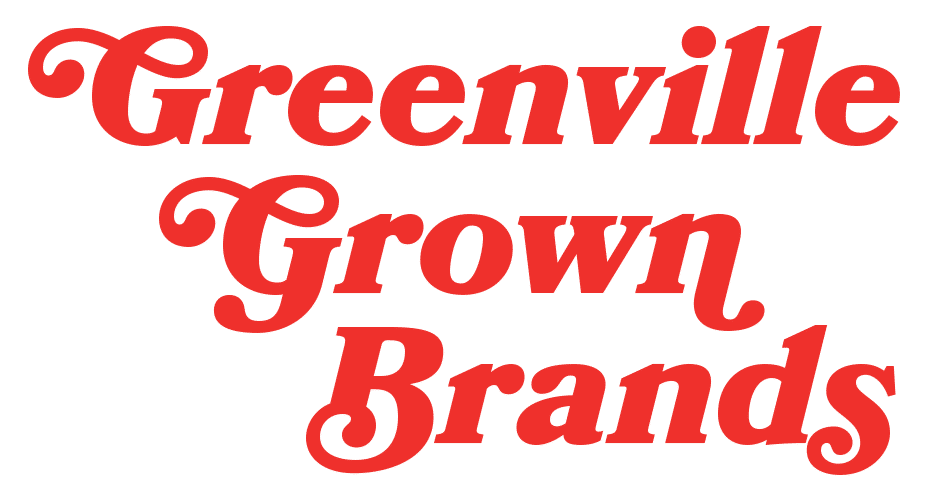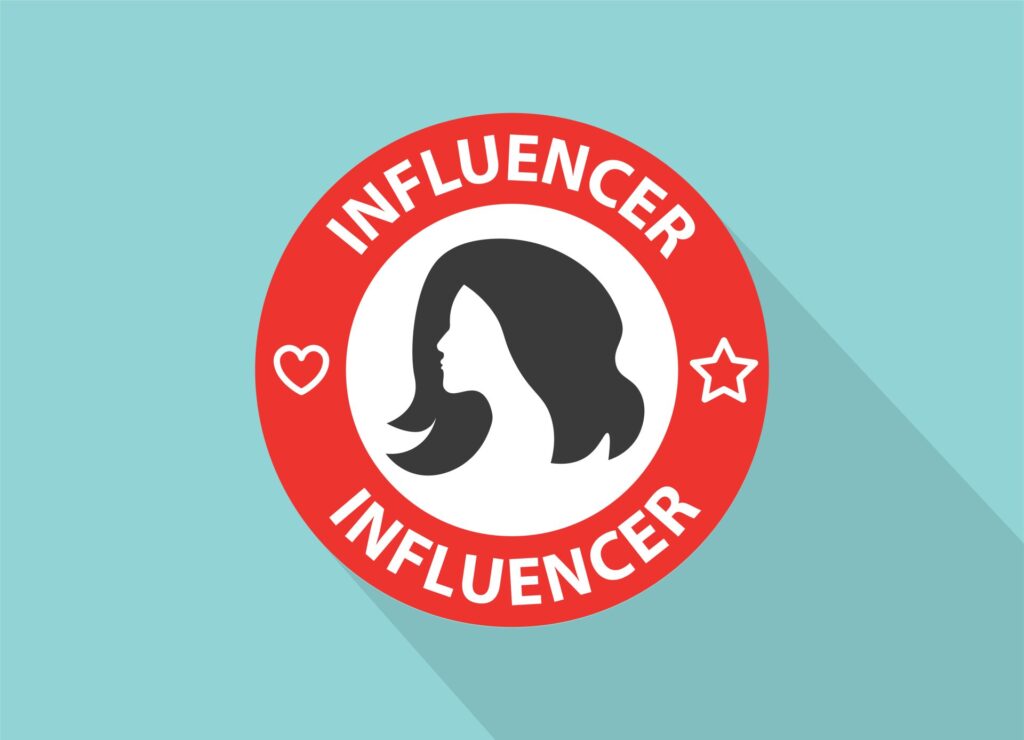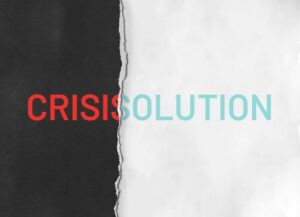There’s no doubt that you’ve heard about influencer marketing and how brands are using this next generation marketing tool to catapult to new levels of marketing success. But what exactly is influencer marketing, how does it work, and can it work for your brand?
We’re going to break it down for you here.
First, let’s define an influencer. It’s someone who has an engaged audience and is viewed as an authority figure with the ability to influence people’s perceptions and purchase decisions. They don’t necessarily have hundreds of thousands of followers. In fact, many effective influencers serve a niche market or industry and have a few thousand loyal followers. What’s important is their relevance to your target audience and their authenticity in delivering content their audience engages with.
Think of influencer marketing as the modern day version of an endorsement. For decades, we’ve seen athletes and celebrities in ads endorsing products. Think Michael Jackson for Pepsi and Michael Jordan for Nike. Today, with so many online influencers engaging with their followers on a daily basis, companies can achieve great exposure through an influencer marketing strategy.
A large percentage of Internet users turn to social networks when researching a brand, and, not surprisingly, these percentages are larger among the younger age groups. Customers tend to trust peers and people they relate to more than companies, so that’s where influencer marketing comes in as an effective tactic in today’s social media-driven world.
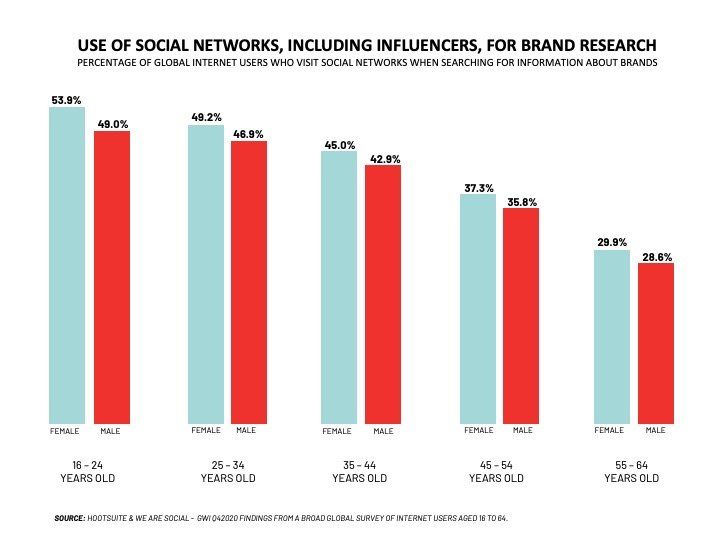
Now that we understand who influencers are and the impact they have on consumers’ brand perceptions through social media, we’re going to walk you through six key steps for developing an influencer marketing strategy.
Step 1: Determine your goal
Every influencer marketing campaign should have different goals based on your marketing objectives. It’s important to clearly understand why you want to run an influencer marketing campaign and what measurable results you hope to accomplish. You’ll also want to make sure you have the appropriate systems in place to measure your KPIs. The most common goals center around the following categories:
- Brand Awareness
- Common metrics: Impressions, Reach, Mentions
- Traffic
- Common Metrics: Website referrals from social media, Click-through rate (CTR), Link clicks
- Sales and Lead Generation
- Common Metrics: Form Completions, Purchases, Average Order Value (AOV)
- Social Media Followers and Engagement
- Common Metrics: New followers, Total followers, Follower growth rate, Engagement, Engagement rate
- Reputation
- Common Metrics: Sentiment Score
Set clear, measurable goals for each campaign that aligns with your overall marketing and branding strategies. It’s important to consider your budget when setting goals.
Step 2: Set Your Budget
The influencer marketing industry is rapidly expanding, and its spend is outpacing traditional advertising spend. It’s set to nearly double from $8 billion in 2019 to an estimated $15 billion by 2022. On top of that, we’ve seen a 50% compounded annual growth rate (CAGR) for influencer marketing over the last five years compared to a 4.8% CAGR for global advertising spend over the same time period.
Typically, when setting budgets for a new marketing strategy, you can work backwards using industry averages and applying them to your goals in order to estimate how much you need to spend. While we would recommend this strategy for many other marketing campaigns, influencer marketing will vary heavily, depending on your business, the influencer and their audience, and the campaign itself. Due to the high degree of variance, we recommend starting small and establishing a baseline before ramping up spend.
In addition to paying an influencer for their work, we also recommend accompanying paid marketing efforts to drive the success of the campaign. Below are few examples of these additional efforts to consider and budget for:
- Always-on Incentives: An always-on strategy means that you’re partnering with influencers for a long period of time vs a short promotion. We highly recommend an always-on strategy as it is mutually beneficial, providing influencers with a long-term revenue stream and marketers with higher ROI at a lower cost.
- Influencer Incentives: Initiatives are any additional commissions paid out to the influencer based on performance (e.g a portion of profits when someone uses an influencer’s coupon code)
- Paid Media: You’ll likely want to put aside additional spend in order to further promote your top-performing influencer-generated content (IGC) on relevant mediums such as…..
- Additional Technology: You’ll likely need to pick up some influencer marketing tools to make sure your efforts are organized. Make sure you have the appropriate technology to stay on top of everything. Here is a great list of tools to help get you started.
- Reserve Spend: You’ll want to consider setting aside additional money for unforeseen expenses or opportunities.
Step 3: Finding your Influencers
One of the most important things to understand is that you don’t have to partner with the top influencers to have an effective campaign – a larger audience doesn’t necessarily mean greater results. It’s important that the influencer’s audience, personality, brand, content, and expertise align with your brand and your marketing goals.
Influencers range from mega influencers to nano influencers, and each has benefits to offer brands.
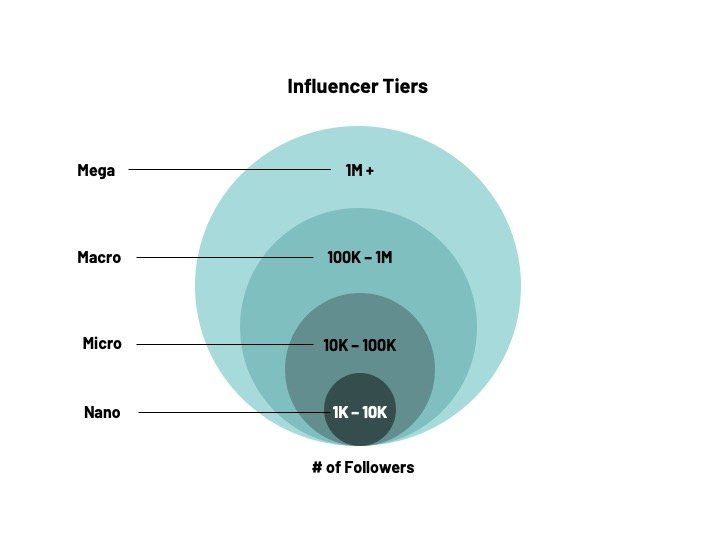
Mega Influencers (1 million+ followers)
- Typically famous offline first, these influencers are musicians, actors, sports figures, TV/reality TV stars, and other celebrities. While they have a huge following, they do not have relationships or much engagement with their followers
- Best for: Big brands, large budgets, products/brands with a goal of reaching the masses with their content.
- Things to know: Engaging with these influencers can be challenging and often requires working through an agent. The cost for a single post can be very costly (in the thousands of dollars per post). While their posts can make an impact in awareness, influencers are not an expert in your industry or for your product and making sure the content is relevant to both brands can be tricky.
- Example: Kevin Hart Well-known celebrity with 129 million Instagram followers

Macro Influencers (100,000 to 1 million followers)
- Macro influencers rose to fame online or are lesser-known celebrities with a smaller following than Mega influencers. They are prominent bloggers/vloggers, YouTube stars, and podcasters who use social media as their livelihood by creating strong content and engaging with their followers. They know their audience and are experienced at collaborating with brands for effective results.
- Best for: Larger brands with the budget to reach a large, targeted audience
- Things to know: Macro influencers are often extremely selective in brands they will partner with; however, their audiences are highly engaged and typically concentrated on certain industries or areas of interest. They are known and respected for their expertise. Depending on their reputation and position in the industry, the average cost per 10,000 followers is around $100 per post.
- Example: Aggie – Travel Blogger with 870,000 Instagram followers
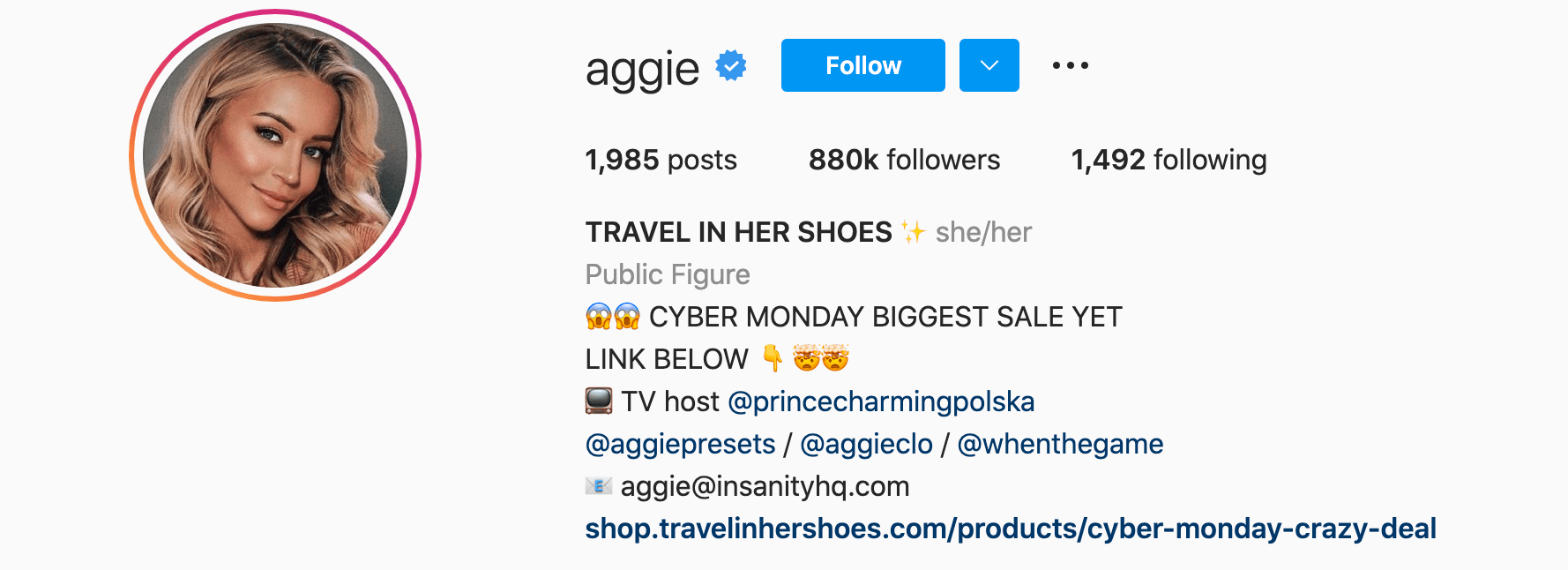
Micro Influencers (10,000 – 100,000 followers)
- These influencers have a very niche interest and are known for their expertise in that niche, giving them credibility among their highly-engaged followers. They are ordinary people who established themselves on social media within their industry, community, or area of interest, and, because of that, they have strong engagement rates.
- Best for: Brands and companies looking for an authentic and reliable influencer partner with strong rapport with their audience. Excellent for B2B and B2C companies, new brands, and start-ups.
- Things to know: Micro influencers are very selective about who they will work with, engaging only with brands that directly relate to their area of expertise and topics of focus.
- Example: Jake Hall – Hosts “The Manufacturing Millennial;” 26,884 LinkedIn followers
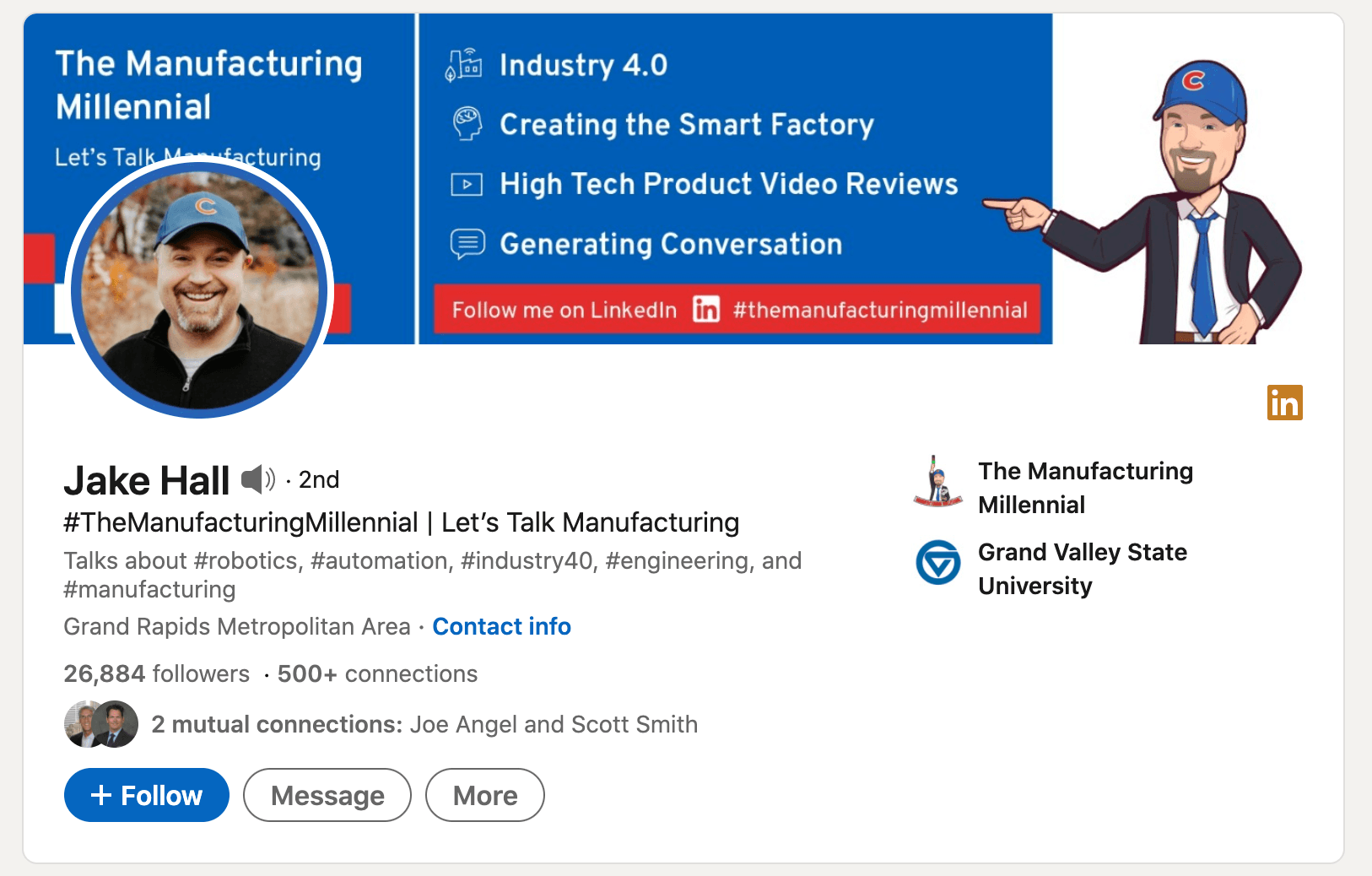
- Nano Influencers (1,000 to 10,000)
- Although they have smaller audiences, they have a strong influence within their immediate communities. They can also be experts in very specialized fields or areas of interest/hobbies.
- Best for: Companies and organizations seeking engagement and awareness in specific industries, areas of interest, or communities.
- Things to know: Because of their smaller following, their audiences tend to be more active and loyal and see their recommendations as genuine. Nano influencers are approachable and far less costly than larger influencers.
- Example: Brae Feazel – shares her enthusiasm about DIY crafts, cleaning and organizing on Instagram, where she has 8,253 followers.
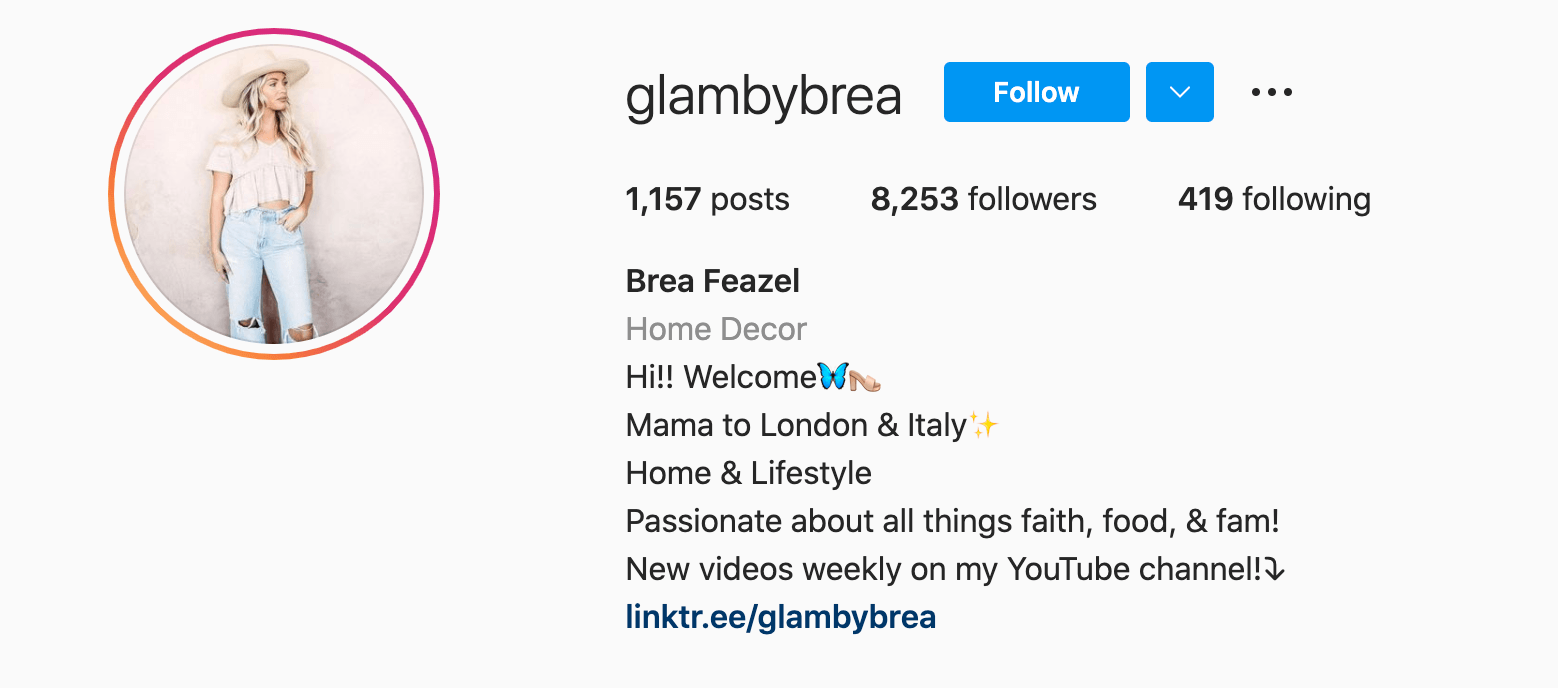
What makes a good influencer for your brand is one that provides content relevant to your customers and who has a loyal and engaged audience. They should be respected, authentic, and have a tone and style that aligns with your brand.
How and where do you find the right influencers? First, determine how many influencers you would like to engage with. We recommend starting off with just one or two to test the waters. Remember, you don’t have to partner with the top influencer in your industry. Pick some up-and-comers and build relationships with them as they grow. Starting out, the best way to find an influencer is to roll up your sleeves and do some research. There are tools and resources out there that offer these services for a fee, but if you’re fairly active on social media, know your industry, and spend a little time doing your due diligence, you’ll most likely be able to compile a list of influencers.
Once you’ve identified several influencers that meet your criteria, conduct research and determine the ones that best match your campaign goals and proceed to the next step: engaging and building relationships with influencers.
Step 4: Engaging and building relationships
Once you find a few influencers that align with your brand and marketing goals, start following them and spend time getting to know them: what they post about, how they engage with their followers, other brands they partner with, their personality, their tone of voice, and how authentic and believable they are.
And when you’re confident they’re a good fit, reach out to them through an email or direct message. Provide an introduction to your brand, your company’s mission/values/positioning, and how it is consistent with the influencer’s. Explain how your brand is relevant to them and their followers and begin to explore how to partner with them.
Do not rush this process. Take the time to build a relationship, understand how your brand can contribute to their content, and explore partnership opportunities.
Step 5: Outlining content to support your goals
Influencers want to grow their audience and share great content, and you want to reach their followers with your content. Stellar content that will help your influencer’s target audience while also being consistent to their brand is the key to a successful partnership.
Work with your influencer to determine the best approach for creating content that allows them to be authentic to their brand while staying true to your brand. Include these details in an influencer marketing agreement that sets clear expectations.
Influencer agreements should include important details, such as:
- Timeline for posts – frequency, specific days/times for posts, total number of posts
- Type of posts they will post, including conversational, features, sales-specific
- Details regarding external links, hashtags, shares, reposts, original content, etc.
- Language/topics to avoid
- Expectations regarding other products/companies mentioned in the same post
- Specific deliverables, including videos, images, product samples, etc.
- Process for reviewing/approving content
- Compensation – cost per post, free product for contests or giveaways, etc.
Step 6: Evaluating your ROI
Influencer campaigns are still an emerging strategy, but amidst all of the excitement around them, you’ll need to make sure that they’re providing value and be able to measure the results of your efforts. If your goals are centered around sales/lead generation or web traffic you should be able to easily quantify your efforts and calculate simple ROI using the following formula:
(Sales Growth – Marketing Cost) / Marketing Cost = ROI
If your goals are centered around brand awareness, social media followers/engagement, or reputation, the sales growth figure will likely be a bit more difficult to gather. You’ll need to assign a dollar figure to your metrics using an attribution model to find the sales growth that occurred as a result of your campaign. To find out what attribution model fits you best, we recommend this article.
Influencer marketing can be an effective way to boost your brand awareness. Now that you understand influencer marketing, are you ready to get started with your influencer marketing campaign? FUEL can help develop your strategy and determine if influencer marketing is right for you. Contact us today for a free 30-minute consultation.

